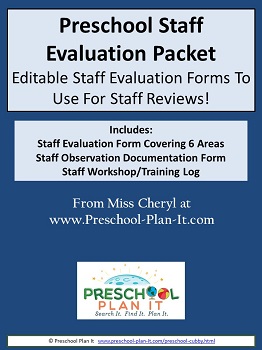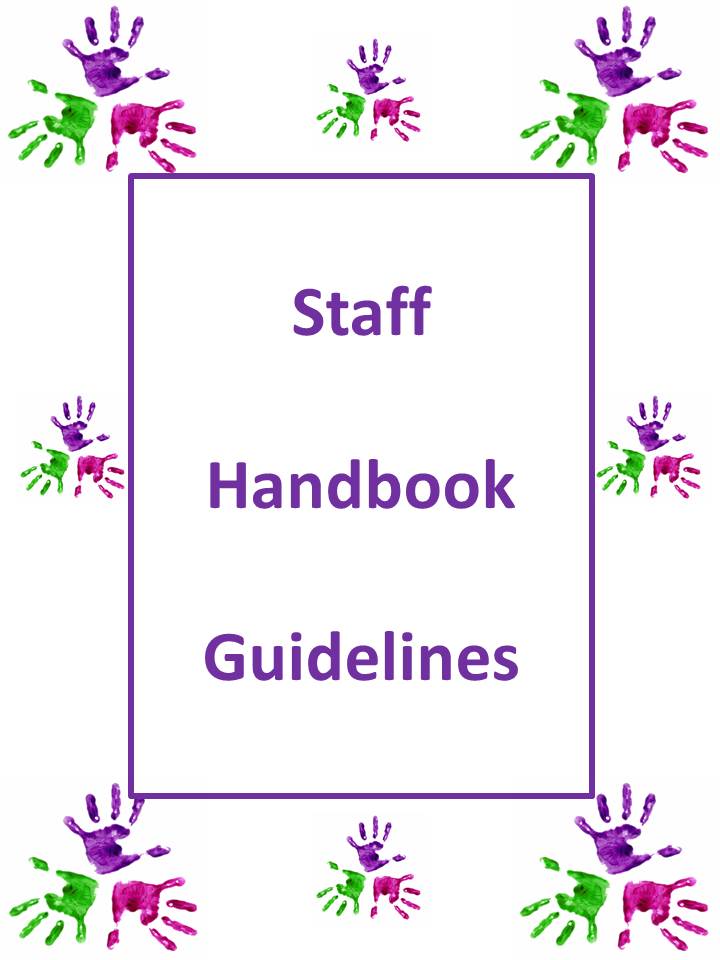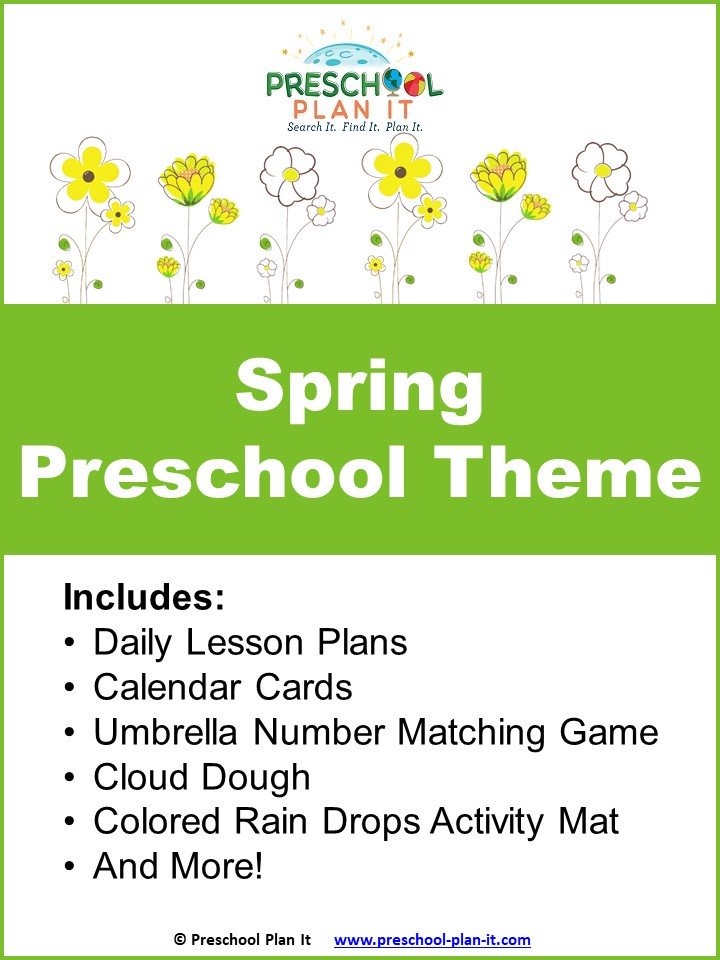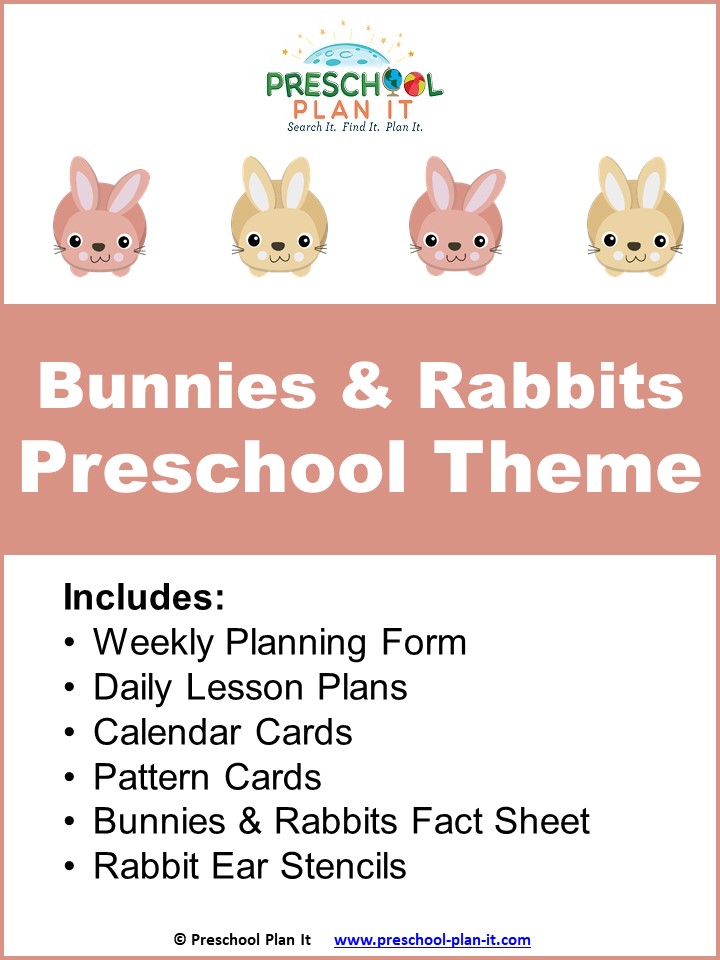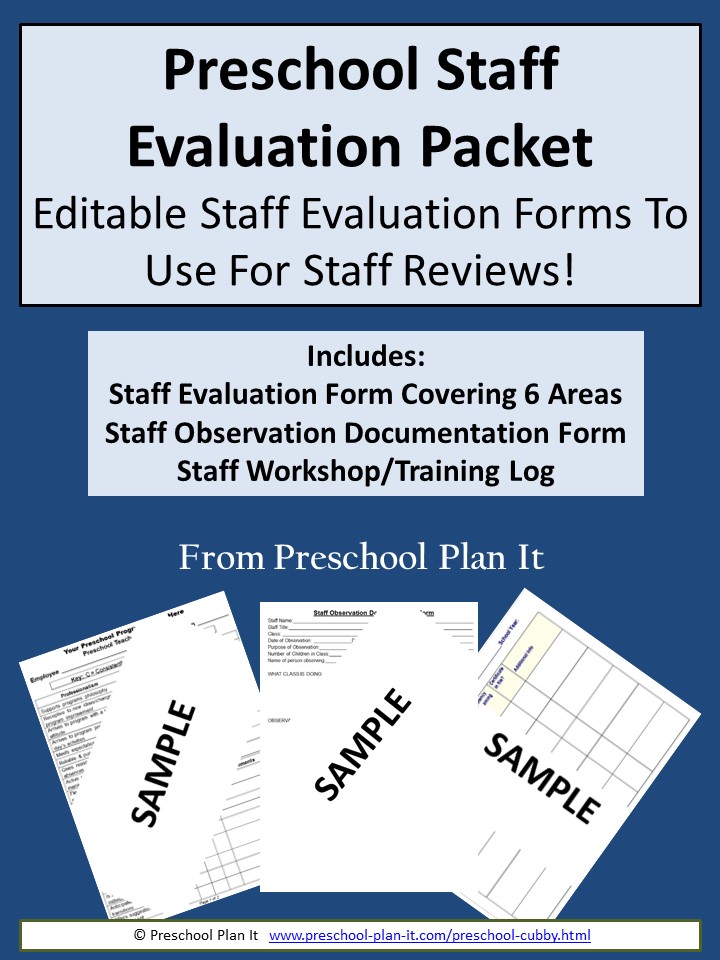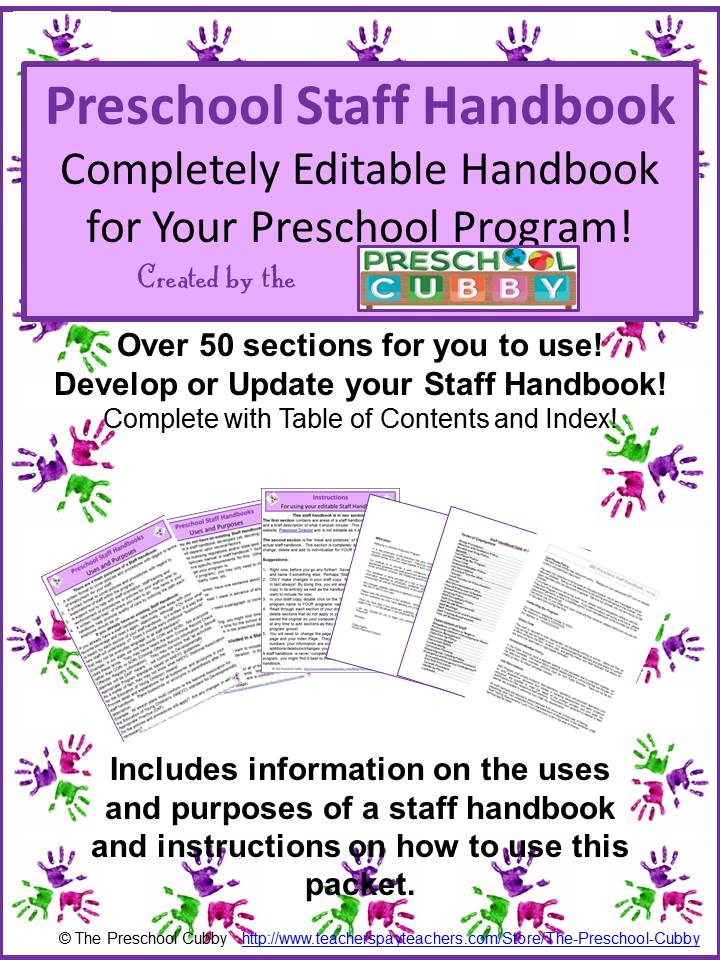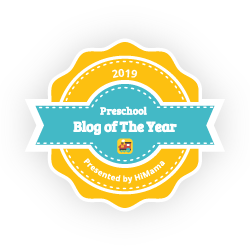- Theme Packs
- Themes
-
Preschool Planning
- Preschool Teachers
The Three "P's" of the Preschool Employee Evaluation
An effective preschool employee evaluation form must balance purpose, program needs, and philosophy being carried out and professional development plans.
These are the three "P's" of a solid evaluation. Are you covering all three areas effectively?
Let's begin by looking at each area in detail and then look at the basic steps to creating an effective evaluation form.
#1- Purpose
This may seem obvious; however, we need to be clear on the purpose or multiple purposes of an employee evaluation. Why are you meeting with the staff member? The purpose will determine the information you prepare.
The overall purpose should be a tool to measure a teacher's growth, support their development not to judge performance or to support "renewing a contract" because "evaluations are mandatory).
There are generally four purposes for preschool evaluations:
A. Performance Review
B. Monetary Increase
C. Professional Development Review
D. Addressing area(s) of concern
You may (or may not!) address all four areas in one annual review.
Performance Review:
A performance review typically happens annually. The purpose for this meeting is to discuss the employee's involvement in the program philosophy and mission. This will be reflected in the areas covered within the evaluation form.
Monetary Increase
A monetary increase review is many times included as part of the annual performance review. In her article,
Five Tips For a Smarter Review Process, Elizabeth Sile recommends separating discussions of money from discussion of job performance and reviews. I like the idea!Professional Development
A Professional Development review should happen several times throughout the year. For example, if your annual review outlines plans made with the staff member regarding their ongoing professional development, you will want to meet with the staff throughout the year to specifically discuss their progress.
Addressing Concerns
Addressing an area of concern will warrant a meeting as soon as the area is identified. You will, in this case, meet immediately about the concern, create a plan for change and follow up in a timely manner.
"Employee reviews are a process that should happen all year long."
--Paul FalconePaul Falcone is the author of
2600 Phrases for Effective Performance Reviews: Ready-to-Use Words and Phrases That Really Get Results
I highly recommend this book for your own library of go-to books for Staff Evaluations!
Click Here to Learn More About This Book!Robert J. Marzano writes about the TWO purposes of Teacher Evaluation in his article,
Teacher Evaluation: What's Fair? What's Effective? One of his points in this article is, "...measuring and developing (italics added by me) teachers are different purposes with different implications. An evaluation system designed primarily for measurement will look quite different from a system designed primarily for development." His article is worth reading.#2- Program Specific
Your evaluations must be program specific. There is no one-size-fits-all form to use. Your program has its own unique benefits and value to the families your serve, the staff you employ and your community. Your evaluation must reflect these values. How?
A. It must be state specific.
Your state regulations may have very specific information that must be covered in a staff evaluation and, in some cases, how that is to be carried out.
For example, one child care licensing regulation stated the following:
"The director shall observe, at least once every two (2) months, each staff member while working with children and meet with staff members as needed to discuss children’s individual needs and needs of families.
Staff performance evaluations are performed at least annually and will include staff training and professional development needs.
Staff members shall review, provide input, comment on and sign and return annual evaluations.
Documentation of all observations and consultations shall be filed in the staff member’s employee file."
Pretty specific, right? It gives us just a baseline of what needs to happen.
Gathering as many varieties of a teacher's performance throughout the year is critical in giving a fair and honest review that will help the employee to reflect and grown in their position.
As with children's reviews , planning observation documentation throughout the year is important. Don't wait until 4 weeks before "review time" to gather information. Invest this time throughout the year.
"The amount of specificity shows the employee that the manager was
watching, noticing, and appreciating."-Sharon Armstrong
Sharon Armstrong is the author of
The Essential Performance Review Handbook:
A Quick and Handy Resource For Any Manager or HR Professional
This is another book I highly recommend for your own personal library!
Click Here To Learn More About This Book!
B. Your evaluation forms should reflect your program's mission or philosophy.
Are home visits a part of your program's services? Are teachers required to call families once a month to check in with them? Are lead teachers required to prepare a training for their classroom's staff once a quarter?
Listing these items on the evaluation is a reminder that these areas are important to the program. Of course, they would also be listed in a staff member's job description, which brings us to the next area.
C. Your evaluation should reflect the specific job description of the staff member.
Ideally, you would have a different evaluation form for each type of employee you have (i.e. teacher aide, teacher, lead teacher, assistant teacher, assistant director, etc.).
However, this would be very time consuming and redundant in the work you've already done! Instead, print out the job description for each person's position. Attach a copy of that job description to the evaluation form. Provide a copy of both forms to the staff members a few weeks before their review.
In doing this, you will be giving your staff time to reflect on their position by re-reading their job description. Quite honestly, when was the last time you read the job description of YOUR OWN position?!!
Providing a copy of the job description offers a wonderful opportunity to make plans (during the review) of areas the staff member may need training or guidance on.
Providing a copy of the review form allows the staff member the opportunity to view the rubric to be used during the evaluation as well as an opportunity to self-assess prior to the review.
On the evaluation form you would then have one line that states "meets expected duties of job description". During the review, you can address the areas specifically by reviewing the job description with the staff member. I'll address this more in the Delivering the Review article as well.
#3- Professional Development Plans
A Professional Development area should be part of every staff member's evaluation form. We are in the business of serving not only the children in our care and their families, but also our staff.
As directors, we should be continually offering opportunities for our staff to grow WITHIN the expectations of job descriptions and BEYOND those expectations.
More importantly, we should continually be offering opportunities for our staff to grow in the field of Early Childhood Education.
Professional Development goes far beyond the "required in-service" hours required by your licensing agency. The purpose is for each of us to understand what is happening in our field and grow in the field.
Only by doing this can we provide the best, quality care to the families we serve. The children in our care are tomorrow's leaders of OUR WORLD! We invest in them by investing in our staff.
This area of the evaluation form should reflect areas of training that are required for their position. It should also reflect areas that would help the employee grow in their position. Finally, it should reflect areas of interest to the employee that help them grow in the field!
Finding and offering professional development can be time consuming. If you are looking for ideas on creative Professional Development training for your staff, click here to read about many!
Employee Evaluation Summary
As you consider Employee Evaluations and reviews, be clear on the purpose of the meeting.
Create evaluations that include the date needed to cover the different types of reviews you may have (performance, monetary, professional development, addressing concerns).
How? Begin with what you have. Follow these steps:
1. Gather: State licensing requirements regarding evaluations; your current evaluation form; job descriptions; a cup of coffee ;)
2. Blend in items from the licensing requirements and job descriptions.
3. Add in areas you would like to discuss when meeting with staff that is not on your current form.
It is time consuming but so worth it!
Still feel a bit overwhelmed?
Are you struggling with observing staff and then creating a review?
You are not alone!
Writing up an Employee Evaluation is a daunting task.
What you need is an evaluation that reflects best professional practices. This is how you will support your staff, help them grow professionally and, ultimately, improve your program quality!
I have just the evaluation packet for you--it's ready to download--It is editable which means you can add to it or delete items you don't need based on your own program and state's needs and requirements!
Click here to learn more about my Preschool Employee Evaluation Packet.
More Pages You May Like:

Go To the Director's Home Page

Go to Preschool Plan It's Home Page



About This Site:
Hey there! Welcome to Preschool Plan It! I’m Cheryl, a preschool teacher of over 20 years.
I KNOW, I know, you spend hours of time developing your preschool themes, activities and preschool lesson plans each week. You are commited to planning preschool themes and activities that are engaging hands-on, interactive, fun AND meet the goal of supporting each child’s level of growth and development.
I am commited to providing you, the preschool teacher, with everything you need to develop preschool lesson plans and preschool activities for your classroom all in one place!
READ MORE
Join My Free Preschool Teacher Tips Newsletter
You’ll receive a weekly email with planning tips and teaching ideas.
You'll also receive (on the 1st of each month) a free theme starter pack with some printables and activity ideas to get you started planning a theme!Join Now and Get Your First Theme Right Away!
© Copyright 2010-2024 Preschool-Plan-It.com | All Rights Reserved | Privacy Policy & Disclaimer
- Preschool Teachers




